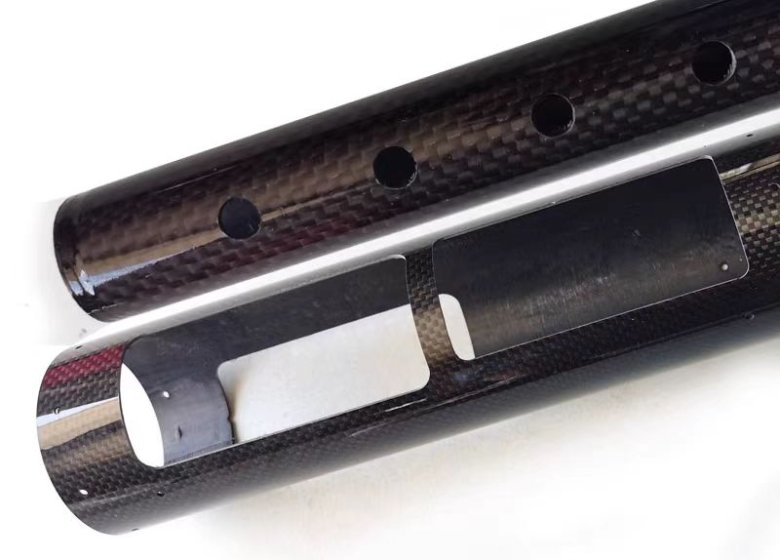
Konseptet med en rørramme i karbonfiber har dukket opp i ulike bilfora og entusiastdiskusjoner, men det er fortsatt lite utforsket. Mens stål- og kromolyrør fortsatt dominerer konstruksjonene - spesielt i biler som den klassiske Porsche 911 - er det mange som lurer på hvorfor karbonfiberrør ikke har blitt et vanlig strukturelt alternativ. Med sin lave vekt, imponerende styrke og korrosjonsbestandighet ser karbonfiberrør ut til å ha klare fordeler. Teoretisk sett burde et slikt chassis være enklere å montere og langt lettere enn tradisjonelle metallrammer.
Så hvorfor har ikke denne innovative tilnærmingen fått gjennomslag?
Utforsking av karbonfiberrørrammekonseptet
Konstruksjon av et chassis fra karbonfiberrør er ikke en uoverkommelig oppgave. Med presisjonskuttede rør, strukturell epoksy og en veldesignet jigg kan en ramme settes sammen uten behov for sveising eller høytemperaturbehandling. Selv om reparasjoner etter en krasj kan være en utfordring, gjelder dette ikke bare karbonfiberkomponenter. Eiere av biler som Alfa Romeo 4C, som har et karosseri i karbonfiber, står overfor lignende reparasjonshensyn.
Fordelene er betydelige: redusert vekt, eksepsjonell stivhet og en moderne estetikk.
Vanlige kundebekymringer
Holdbarhet og reparerbarhet
Karbonfiber kan være vanskelig å reparere sammenlignet med metall. De fleste kjøretøyer utsettes imidlertid ikke for hyppige kollisjoner. For de som designer spesialbygde biler med komponenter som en Karbonfiberrør med en diameter på 5 tommerer det viktig å forstå at reparasjonstjenester kan kreve spesialkompetanse.Kostnadsoverveielser
Et komplett karbonfiberrørchassis innebærer høyere forhåndskostnader. Men for prosjekter som bruker mer håndterbare komponenter, for eksempel et 5 mm karbonfiberrør eller et 7/8 karbonfiberrør, kan kostnadene optimaliseres. I motsetning til en monocoque innebærer denne metoden å sette sammen en ramme - noe som gir fleksibilitet i budsjettering og konstruksjon.Lang levetid
Karbonfiber motstår korrosjon og fungerer godt under jevn belastning. Med nøyaktig design og kvalitetsmaterialer, for eksempel et 9 mm karbonfiberrør som er riktig limt, kan disse strukturene ha lengre levetid enn tradisjonelle rammer. Merk at det ikke er mulig å bøye karbonfiberrørseksjoner, så i stedet brukes rette segmenter og gjæringsskjøter.
Typer rørrammer av karbonfiber
Det finnes flere designstrategier for chassis av karbonfiberrør konstruksjon:
Modulære rammekonstruksjoner
Disse bruker korte segmenter, for eksempel 5/8 karbonfiberrør, sammenføyd med legeringskoblinger eller epoksyede kiler.Tilpassede gitterrammer
Denne metoden bruker lengre lengder som 6 karbonfiberrør, arrangert i et triangulert mønster for optimal styrke.Rammer i hybridmaterialer
Disse kan integrere 4 mm karbonfiberrør i områder med lav belastning og 7 mm karbonfiberrør i kritiske belastningsbaner.
Hver konfigurasjon gir ulike fordeler, avhengig av kjøretøyets bruksområde og ytelsesmål.
Kostnadsanalyse: Priser på karbonfiberchassis
Et helt chassis konstruert av 5 tommers karbonfiberrør koster betydelig mer enn en tradisjonell stålramme. Materialer av høy kvalitet, lim og presise verktøy bidrar til den totale kostnaden. Ytelsesgevinsten - spesielt vektreduksjonen - kan imidlertid rettferdiggjøre investeringen i motorsport og avanserte kjøretøyapplikasjoner.
For å holde kostnadene nede bør du vurdere en hybridstruktur. Bruk 8 mm utvendige karbonfiberrør på utvalgte steder, og forsterk mindre kritiske områder med aluminium- eller komposittpaneler. På denne måten kan byggherren oppnå vektbesparelser uten å overskride budsjettbegrensningene.
Velge riktig løsning for ditt bruksområde
Valg av riktig rammekonstruksjon avhenger av det spesifikke prosjektet:
Bilcross eller banebruk
For lette konstruksjoner med høy ytelse kan en fullkarbonramme med 5/16 karbonfiberrør i viktige områder være ideell.Prosjekter for gatekjøretøy
En tilnærming med blandede materialer og bruk av 6 tommers karbonfiberrør i bærende områder kan gi en praktisk balanse.Offroad- eller nyttebygg
Karbonfiber kan være effektivt selv i tøffe miljøer, forutsatt at omhyggelig design kompenserer for retningsbestemte styrkebegrensninger.
Hvert enkelt bruksområde krever gjennomtenkt prosjektering, men mulighetene med karbonfiber er mange.
Konklusjon: En fremtid bygget med karbon
Rørrammer i karbonfiber representerer et dristig skritt fremover innen kjøretøydesign. Konstruktørene har nå tilgang til høyytelsesmaterialer som 7/8 karbonfiberrør og moderne epoksyer som gjør det mulig å lage slitesterke og lette enheter. Selv om utbredelsen fortsatt er begrenset, er det tekniske potensialet ubestridelig.
For de som er villige til å avvike fra konvensjonelle metoder, tilbyr karbonfiberrørrammen et overbevisende alternativ. Tiden kan være nærmere enn mange forventer.
Referanser:
1. Hvordan kutte karbonfiberrør?
2.Betydningen av harpiksvalg ved produksjon av ovale karbonfiberrør
3.Kan karbonfiberrør masseproduseres? Her er hva du trenger å vite
4.Hvordan forbedre overflatekvaliteten på karbonfiberrør med stor diameter
5.Hvordan lage et rulleinnpakket konisk karbonfiberrør?

